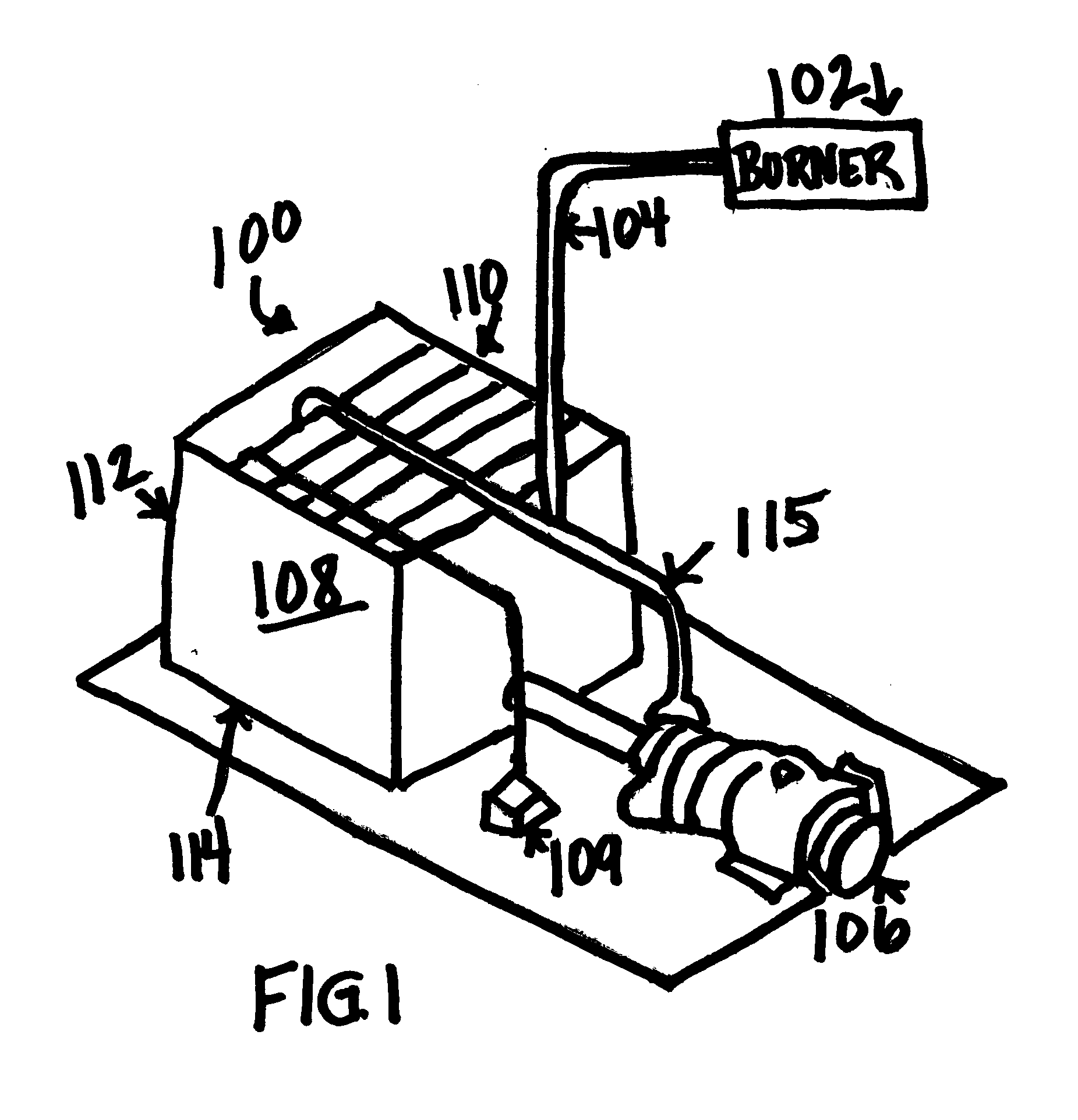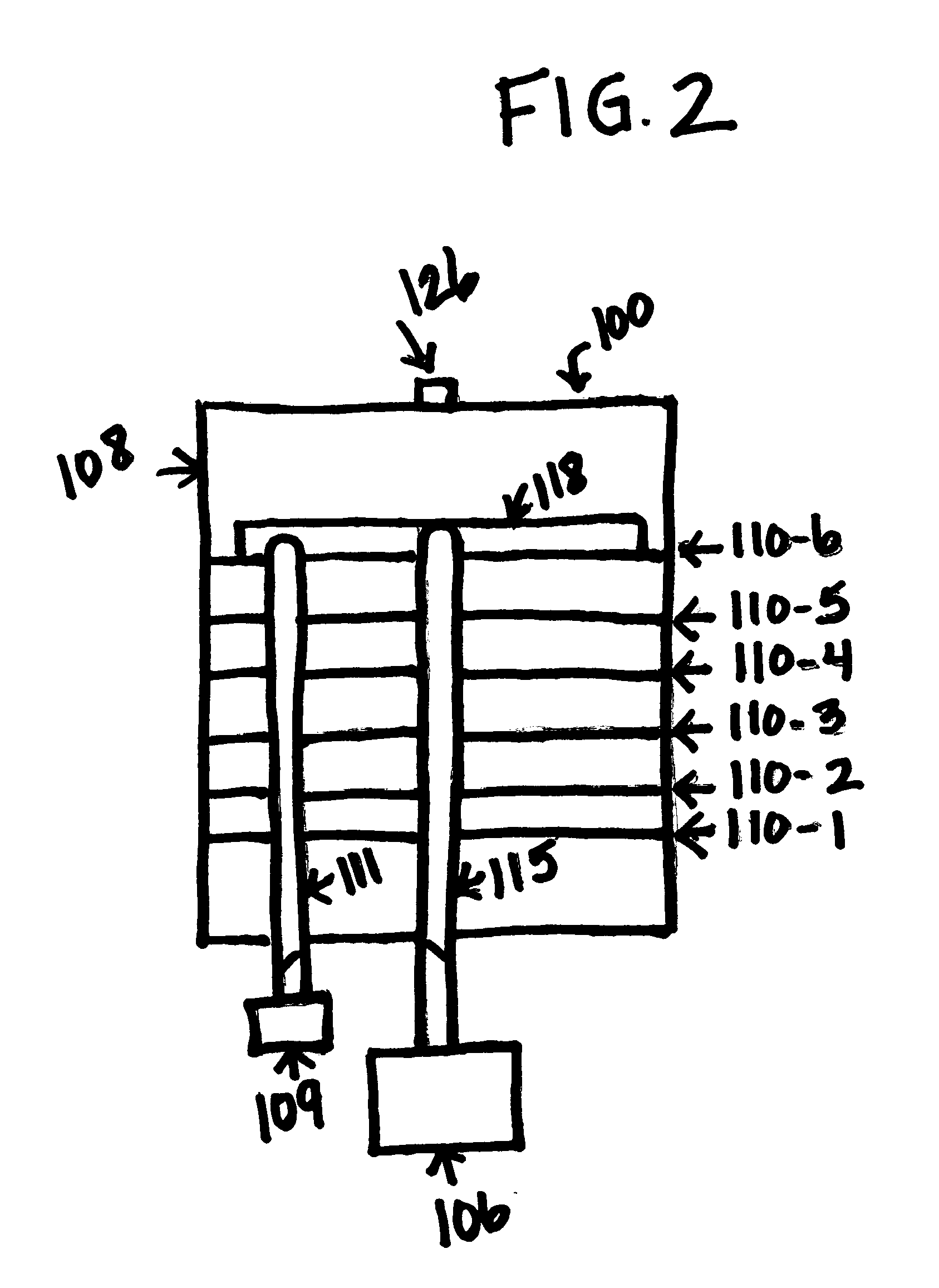Air quality by eliminating greenhouse gas emissions through a process of conversion of flue gases into liquid or semi-solid chemicals
a technology of flue gas conversion and air quality, applied in the direction of electrolytic organic production, separation processes, products, etc., can solve the problems of leukemia with prolonged exposure, and achieve the effect of reducing emissions from fossil fuels
- Summary
- Abstract
- Description
- Claims
- Application Information
AI Technical Summary
Benefits of technology
Problems solved by technology
Method used
Image
Examples
Embodiment Construction
:
[0020]Typical flue gas from burning of fossil, non-fossil and biomass fuels contains variable amounts of nitrogen oxides (NOx), sulfur oxides (SOx), hydrogen sulfides (H25), and particulate matters, as well as nitrogen (N2), carbon monoxide (CO) and carbon dioxide (CO2). The composition of the flue gas mixture varies according to the specific fuel, and the particular application, for example: trucks, tractors, generators, automobiles, diesel vehicles, industrial emissions, and oil well flares. The present invention uses several processes that prevent these and other associated compounds from being emitted into the atmosphere. The processes described below are applied to the present invention shown in FIGS. 1-4. For the first time, the present invention collects about 100% of the Greenhouse Gases from the flue gases, converts and condenses them into various chemical outputs, and thereby substantially prevents Greenhouse Gas discharge from the vessel. For the first time, this emissio...
PUM
| Property | Measurement | Unit |
|---|---|---|
| Fraction | aaaaa | aaaaa |
| Flow rate | aaaaa | aaaaa |
| Size | aaaaa | aaaaa |
Abstract
Description
Claims
Application Information
 Login to View More
Login to View More - R&D
- Intellectual Property
- Life Sciences
- Materials
- Tech Scout
- Unparalleled Data Quality
- Higher Quality Content
- 60% Fewer Hallucinations
Browse by: Latest US Patents, China's latest patents, Technical Efficacy Thesaurus, Application Domain, Technology Topic, Popular Technical Reports.
© 2025 PatSnap. All rights reserved.Legal|Privacy policy|Modern Slavery Act Transparency Statement|Sitemap|About US| Contact US: help@patsnap.com



